- Home
- Resurrection ▾
-
Learn ▾
- Free library
- Glossary
- Documents
- Initiation
-
Shaped fabrics
- Introduction
- Popularization
- Definitions
- Le métier de façonné
- Principes du façonné
- Mécaniques de façonné
- Le jeu des crochets
- Les cartons
- Chaîne des cartons
- Mécanique 104 en détail
- Pour en finir
- Montage façonné
- Empoutage 1/3
- Empoutage 2/3
- Empoutage 3/3
- Punching, hanging and dip
- Autres façonnés
- Façonnés et Islam
-
Cours de tissage 1912
- Bâti d'un métier
- Le rouleau arrière
- Les bascules
- Formation du pas
- Position de organes
- Mécanique 104 Jacquard
- Fonctionnement 104
- Lisage des cartons
- Le battant du métier
- Le régulateur
- Réduction et régulateur
- Mise au métier d'une chaîne
- Mise en route du métier
- Navettes à soie
- Battage
- Ourdissage mécanique
- Préparation chaînes et trames
- Equipment ▾
- Chronicles ▾
- Fabrics ▾
- Techniques ▾
- Culture ▾
- Language ▾
Quilling
The threads wound on the pothes should also be used for the weft. Canning consists of winding the weft (single yarn or wire assembly) onto the boxwood pipe that will be housed in the shuttle. The hose, when filled with weft thread, is then called a can ...
Detail
The cane-pots and cans of which we have spoken so far are said to parade. But there is another kind called to unfold it. In this case, the thread is wound around a wooden pipe which is movable in the shuttle. It takes place instead of scrolling.
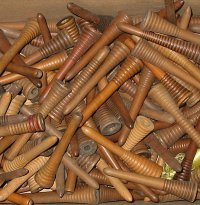

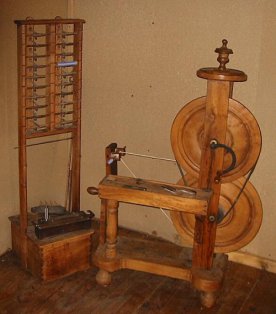
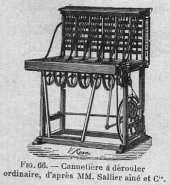

Detail
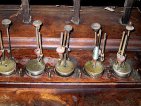
Canetière à dévider
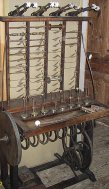




Rouet lyonnais
An old washing machine motor is perfectly suited for driving two Staubli dumpers.

It is 6:06 pm at the big clock. Joseph Perret, my grandfather preparing his cans for tomorrow on his makeshift Lyons wheels.
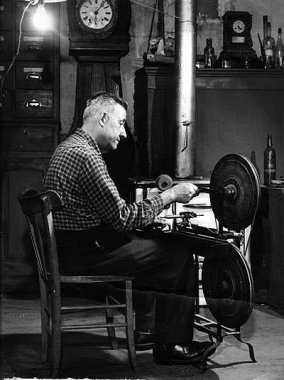
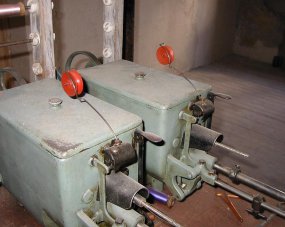
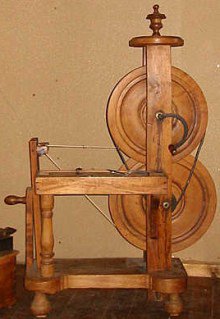
Older dugers, such as the STAUBLI pile drivers, are safe, reliable and easy to use. They are also indestructible, the sprockets and wheels being drowned in a good liter of oil inside a casing. We will soon be adding photos of these duckers that we will also use in our workshop. We can still find these ducks in perfect working condition for 50 or 60 euros the two-spindle ducker to make two cans at a time. Of course these ducts are not reserved for silk and receive all sizes of pipes (cans). Moreover, they are easy to live. If your pipes (cans) have a hole too big, hop, a piece of paper wrapped around the broiler pin and everything is fine...
In order for the can to unroll easily in the shuttle where it can not have any rotational movement, the yarn must be disposed therein in concentric zones superimposed and gradually ascending on a conical mold, the first zone (FIG. 60) formed From A to B, the second from A1 to B1, and so on, each zone having the same height and the same surface of revolution, so that the filled bobbin affects this shape, the final cone A1B1 being perfectly equal to the cone AB Originating on which all the others have been successively formed and superimposed by retreating a thickness of wire at each new formation, with interposition of the retrograde strand between each layer, which, by its very opposite position and crossing the others, opposes Their entanglement and ensures an easy unfolding.
Such is the secret of making a good can, as described by R.Lariviere and F.Jacobs, in their New Complete Weaving Manual of 1919. It is conceivable that, in order to do it properly, Hand. Thus, before the invention of the mechanical pole-truck, this work was entrusted only to workers of certain skill ...